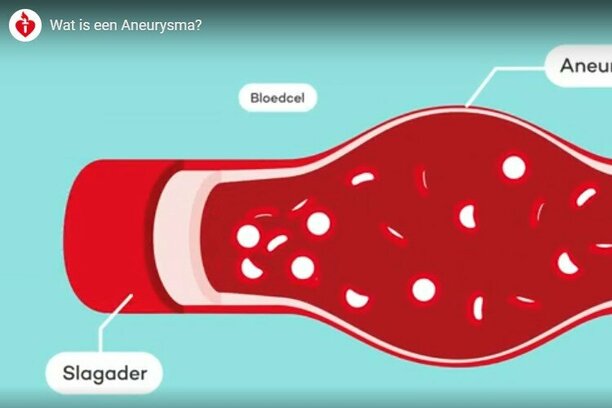An aneurysm is a dangerous vascular condition in which a weak spot in a vessel wall can bulge like a balloon. In the aorta, the largest artery in the abdomen, such an aneurysm is life-threatening, especially when it bursts. During her doctoral research, Esther Maas worked on a reliable way to monitor aneurysms using ultrasound. She conducted her research at the TU/e PULS/e group (Photoacoustics & Ultrasound Laboratory Eindhoven) and the Catharina Hospital in Eindhoven. She defended her thesis at the Department of Biomedical Engineering on April 9.
For such a dangerous vascular condition, an aneurysm is often discovered late or even too late. In fact, an aneurysm itself almost never causes any symptoms. It is only when the bulge bursts and bleeding occurs that an aneurysm is usually discovered afterward. When this happens in our body's most vital artery, the aorta, it is life-threatening.

Tracking an aneurysm
Sometimes aneurysms are discovered earlier anyway, usually by chance. For example, during a scan of the abdominal cavity because of other symptoms. In that case, the vascular surgeon can continue to monitor the bulge and intervene when the risk of the aneurysm bursting becomes too great.
"The probability of an aneurysm rupturing is related to its size. Yet we also see differences in patients," Esther Maas explains. "Sometimes relatively small aneurysms also rupture, while in other patients a relatively large aneurysm remains stable."
Diameter and shape
"The current criteria for operating to eliminate the aneurysm are mainly related to diameter, which means that sometimes surgery is performed too soon and sometimes too late. We wanted to improve that by improving our understanding of when an aneurysm is at risk of rupturing. To do this, we looked at the three-dimensional shape of the aneurysm and its mechanical properties."
Currently, standard two-dimensional ultrasound is employed to monitor an aneurysm. The disadvantage of this technique is that a picture can only be taken at one location at a time ('a slice'). While MRI and CT allow the entire three-dimensional shape of the aneurysm to be viewed, these techniques are expensive and time-consuming.
RELIABLE ultrasound
So Maas took up the challenge of using ultrasound to develop a reliable method of monitoring aneurysms. So that patients can be monitored safely, healthcare costs saved and doctors spared the task of operating unnecessarily.
What is an aneurysm?
An aneurysm can occur in any artery but is most common in the aorta (the large body artery). And then usually in the abdomen. An aneurysm is life-threatening.
What is an aneurysm?
An aneurysm is a localized dilation or bulge of a blood vessel. The diameter of the blood vessel is then more than one and a half times larger than normal. Watch the video (in Dutch, ed.) to the left to learn more about an aneurysm. For example, about the symptoms, consequences, and treatment.







